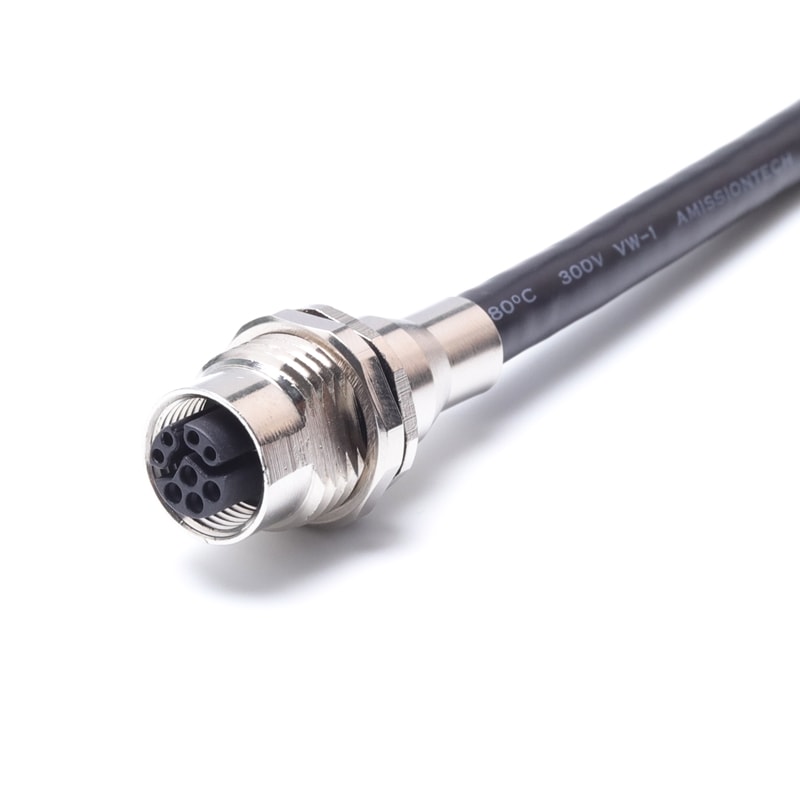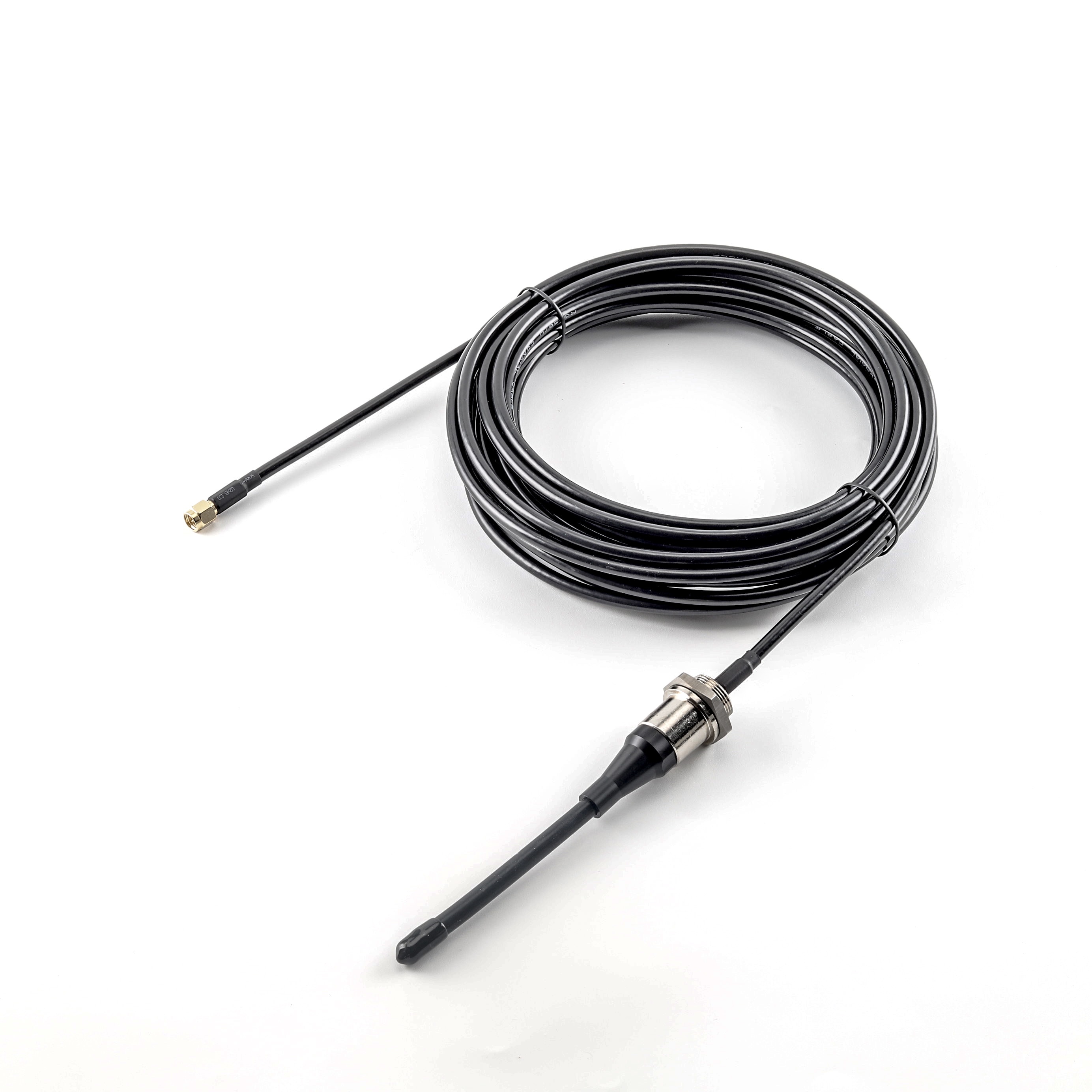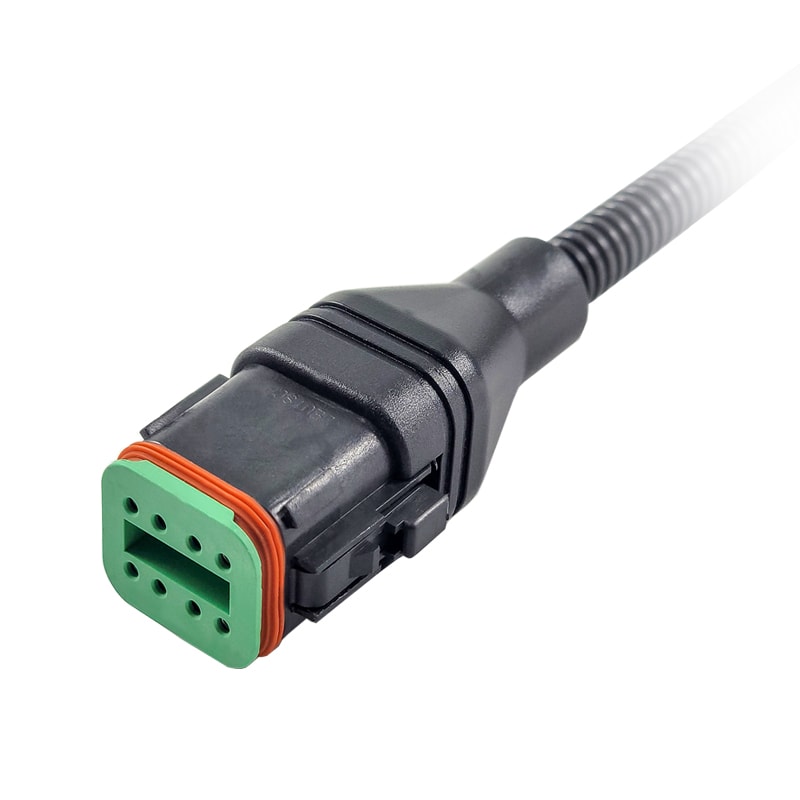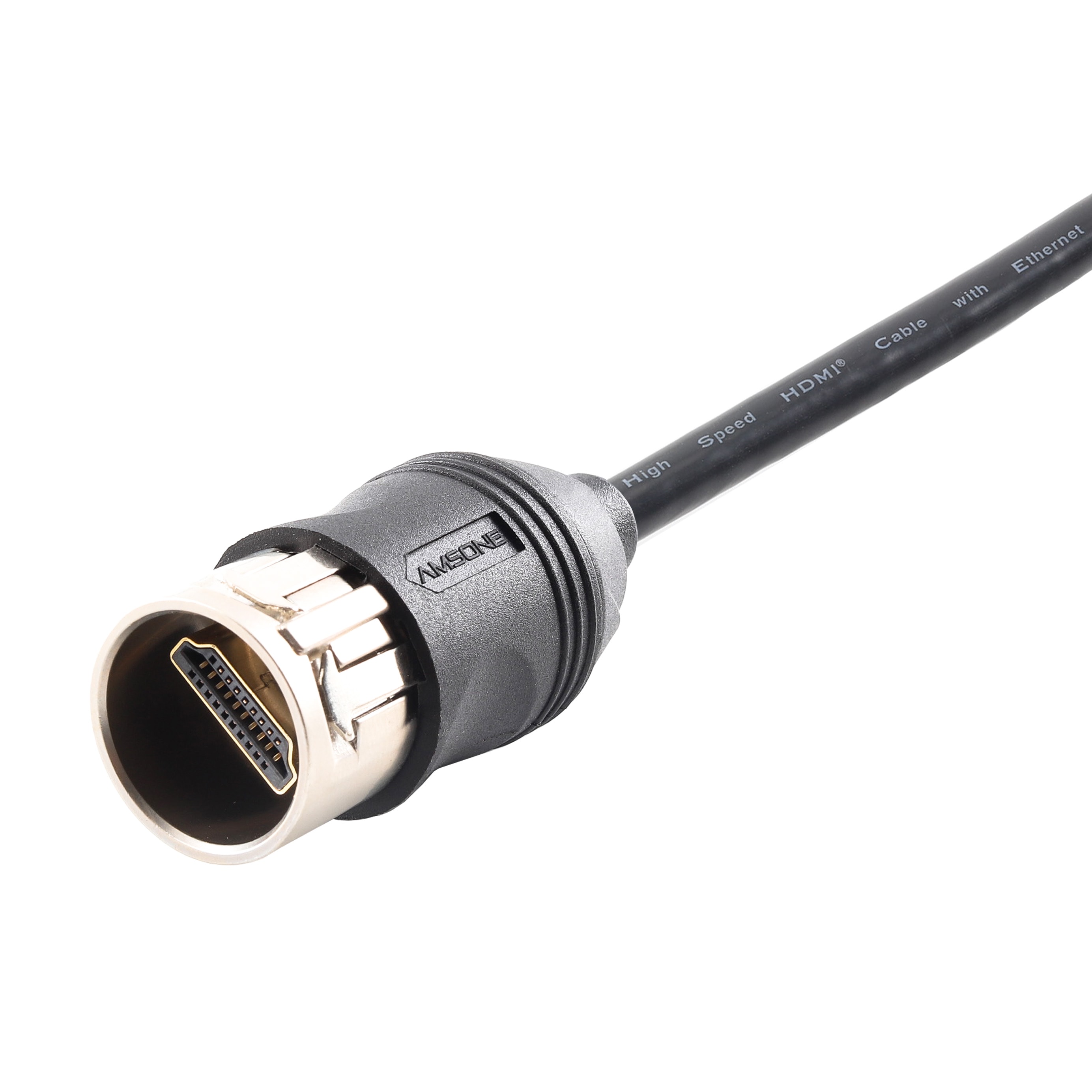In today’s highly connected world, RF (Radio Frequency) cables play an essential role in ensuring reliable, high-frequency signal transmission across a wide range of industries. From mobile communication networks and satellite systems to medical imaging and military equipment, RF cables serve as the backbone of many critical systems. Their job is simple but crucial—carry signals from one device to another without significant loss or interference. Understanding how they work, what they’re made of, and the different types available is key to choosing the right cable for your application.
What is an RF Cable?
An RF cable is a specially designed cable used to transmit radio frequency signals, typically in the range of 3 kHz to 300 GHz. Unlike regular electrical cables, RF cables are optimized to carry high-frequency signals with minimal loss, distortion, or external interference. They are most commonly used to connect devices such as antennas, transmitters, receivers, or testing instruments in systems that require clean and stable signal transmission.
Because high-frequency signals are more prone to interference and degradation, RF cables must meet strict electrical and mechanical performance standards. Their structure, materials, and shielding capabilities are all designed with this in mind.

Core Components and Structure of an RF Cable
The performance of an RF cable largely depends on its internal structure. Though variations exist based on specific types, most RF cables share the following four key components:
1. Center Conductor
This is the core path through which the RF signal travels. It is usually made of solid or stranded copper, though aluminum may be used in some cases. High conductivity and low resistance are essential here to ensure efficient signal flow.
2. Dielectric Insulator
Surrounding the center conductor is an insulating layer made from materials such as polyethylene or PTFE. This dielectric separates the conductor from the shielding layer and helps maintain a consistent impedance, which is critical for signal integrity, especially at high frequencies.
3. Shielding Layer
The shielding wraps around the dielectric and protects the signal from external electromagnetic interference (EMI) or radio frequency interference (RFI). Common shielding materials include braided copper, aluminum foil, or a combination of both. In sensitive environments, multiple layers of shielding may be used for added protection.
4. Outer Jacket
The final outer layer is the protective jacket, typically made from flexible plastic like PVC, TPE, or FEP. This jacket guards the cable against physical wear, environmental stress, moisture, and chemical exposure.
Together, these layers ensure that RF signals travel with minimal loss and remain protected from external noise or disruption.
Types of RF Cables
Different applications require different types of RF cables. The choice depends on factors such as frequency range, signal strength, flexibility, and shielding needs. Here are the most common categories:
1. Coaxial Cables
The coaxial cable is the most widely used RF cable type. It features a single center conductor surrounded by a dielectric, shielding, and a protective jacket. Coaxial cables are commonly used in television systems, internet connections, and radio transmitters. Popular models like RG-6 and RG-58 offer a good balance between performance and cost. Their design minimizes signal loss over moderate distances and provides decent protection against interference.
2. Twinaxial and Triaxial Cables
Twinaxial (Twinax) cables have two inner conductors twisted together and insulated from a common shield. This configuration allows for balanced signal transmission, which improves resistance to external noise. They’re often found in high-speed data environments like data centers or high-frequency testing setups.
Triaxial (Triax) cables go one step further with an additional outer conductor, offering even greater shielding. These are suitable for precision video equipment, sensitive lab instruments, or defense systems where signal integrity is paramount.
3. RF Cable Assemblies
An RF cable assembly is a complete cable with factory-installed connectors at both ends. These assemblies are often customized to meet specific needs in terms of length, connector type, and electrical performance. Whether used in telecom towers or lab testing equipment, high-quality assemblies reduce installation time and minimize connection-related signal loss.
Closing Thoughts on Structure and Types
Understanding the internal structure and the types of RF cables available is the first step in ensuring you select the right cable for your system. A poorly chosen or low-quality RF cable can introduce signal degradation, increase noise, and cause system instability—especially in high-frequency environments. In contrast, a well-matched cable ensures optimal performance, longer equipment life, and fewer maintenance issues.
In the next sections, we’ll explore the practical applications, benefits, and selection tips for RF cables—helping engineers and system integrators make informed decisions.
Applications of RF Cables
RF cables are used in a wide range of industries, each demanding high reliability, signal clarity, and long-distance transmission capability. Below are the most common application scenarios:
1. Telecommunications
RF cables are critical in telecom infrastructure. They connect antennas to base stations, link RF modules within signal processing units, and provide stable transmission lines for wireless systems. The quality of these cables directly impacts data rates, coverage, and signal clarity in mobile networks.
2. Broadcasting
In television and radio broadcasting, RF cables transmit high-frequency audio and video signals between production equipment, antennas, and receivers. Their ability to reduce interference is essential for maintaining signal fidelity during transmission.
3. Aerospace and Defense
In mission-critical systems such as radar, avionics, and communication networks in aircraft and military vehicles, RF cables must perform under extreme conditions including high vibration, temperature variations, and electromagnetic noise. Specialized RF cable assemblies with ruggedized jackets and high shielding effectiveness are commonly used.
4. Medical Equipment
Modern medical imaging and monitoring devices—such as MRI systems, ECG machines, and patient telemetry units—rely on precise signal transfer. RF cables help transmit diagnostic data cleanly, enabling accurate results and real-time feedback in critical healthcare environments.
5. Test and Measurement
In labs and industrial testing environments, RF cables connect signal generators, spectrum analyzers, and network analyzers. High-frequency accuracy and stability are crucial here, and low-loss, phase-stable cables are preferred for consistent measurement results.

Benefits of Using RF Cables
Choosing the right RF cable yields a wide range of functional and operational advantages. These benefits are not only technical but also translate into long-term system efficiency and reduced maintenance costs:
1. Long-Distance Signal Transmission
RF cables support high-frequency signal delivery across considerable distances without requiring repeaters or amplifiers. Their structure allows them to carry signals through walls or over large areas with consistent integrity.
2. Enhanced Security
Unlike wireless transmission, RF cables create a point-to-point physical link. This reduces the risk of signal interception and is ideal for transferring sensitive data, such as financial information or encrypted communications.
3. Stable and Reliable Connection
Because of their shielding design and impedance control, RF cables minimize signal degradation due to noise or EMI. This makes them more reliable than many wireless alternatives, especially in electronically noisy environments.
4. Energy Efficiency
RF cables can transfer data without the need for additional power sources. This is especially beneficial in low-power or passive systems, where cable-based data transfer helps conserve energy.
5. Durability and Environmental Resistance
High-quality RF cables use materials like copper, PTFE, and FEP, which offer excellent resistance to corrosion, heat, and mechanical wear. This increases cable lifespan and reduces the frequency of replacements.
6. Protection Against External Radiation
The shielding inside RF cables protects both the signal and the surrounding environment. This is important in sensitive systems where external interference could disrupt performance or cause safety issues.
RF Cable vs. Coaxial Cable: What's the Difference?
While the terms "RF cable" and "coaxial cable" are often used interchangeably, they’re not exactly the same.
Coaxial Cable is a specific type of RF cable with a single conductor core, surrounded by insulation, shielding, and a protective jacket. It is designed primarily for radio signal transmission. Coaxial cables are widely used for TV, satellite, and basic broadband connections.
RF Cable, on the other hand, is a broader category that includes not only coaxial cables but also more advanced structures like twinaxial and triaxial cables. These cables can carry different types of electromagnetic signals, not limited to traditional radio frequencies. RF cables are engineered for broader frequency ranges and more complex applications, such as digital communication, radar, and high-speed data networks.
Additionally, coaxial cables tend to be more standardized, while RF cables can be custom-built for specific systems and performance requirements.
Comparison Summary:
Aspect | Coaxial Cable | RF Cable (General) |
Structure | Single core + insulation + shield | May include twinaxial/triaxial configurations |
Application Focus | TV, radio, consumer electronics | Telecom, aerospace, defense, medical |
Frequency Range | Moderate (MHz to low GHz) | Wide (kHz to high GHz) |
Customization | Limited | Highly customizable |
EMI Protection | Standard | Enhanced (with multi-layer shielding) |
RF Testing and Maintenance
To maintain signal quality and prevent performance degradation, RF cables must be regularly tested and maintained. Key testing metrics include:
1. VSWR (Voltage Standing Wave Ratio)
This measures how effectively RF power is transmitted through the cable without reflections. A lower VSWR indicates better signal transmission and impedance matching.
2. Insertion Loss
This represents the amount of signal power lost as it travels through the cable. Minimizing insertion loss is crucial, especially over long cable runs.
3. Return Loss
Return loss measures the proportion of the signal reflected back toward the source. Higher return loss values indicate more efficient signal transmission.
Maintenance Best Practices:
Avoid Tight Bends: Excessive bending can damage the dielectric or shield.
Proper Storage: Keep cables in a dry, dust-free environment, away from extreme temperatures.
Routine Inspection: Check for connector damage, jacket cracks, or corrosion, and replace cables as needed.
Conclusion: A Strategic Asset in High-Frequency Systems
RF cables are more than just passive components—they’re essential to ensuring clean, efficient, and secure communication across critical systems. Whether you're working with telecom equipment, medical devices, aerospace systems, or lab instruments, selecting the right RF cable makes a tangible difference in performance and reliability.
With proper design, quality materials, and regular maintenance, RF cables can support complex systems for years without failure. Understanding their structure, types, and functions empowers engineers and integrators to make informed decisions that benefit the entire operation.

 EN
EN DE
DE JP
JP ES
ES SE
SE FR
FR IT
IT CN
CN 한국어
한국어 ภาษาไทย
ภาษาไทย بالعربية
بالعربية Nederlands
Nederlands Türkçe
Türkçe Język polski
Język polski Tiếng Việt
Tiếng Việt Zulu
Zulu Bahasa Malay
Bahasa Malay




